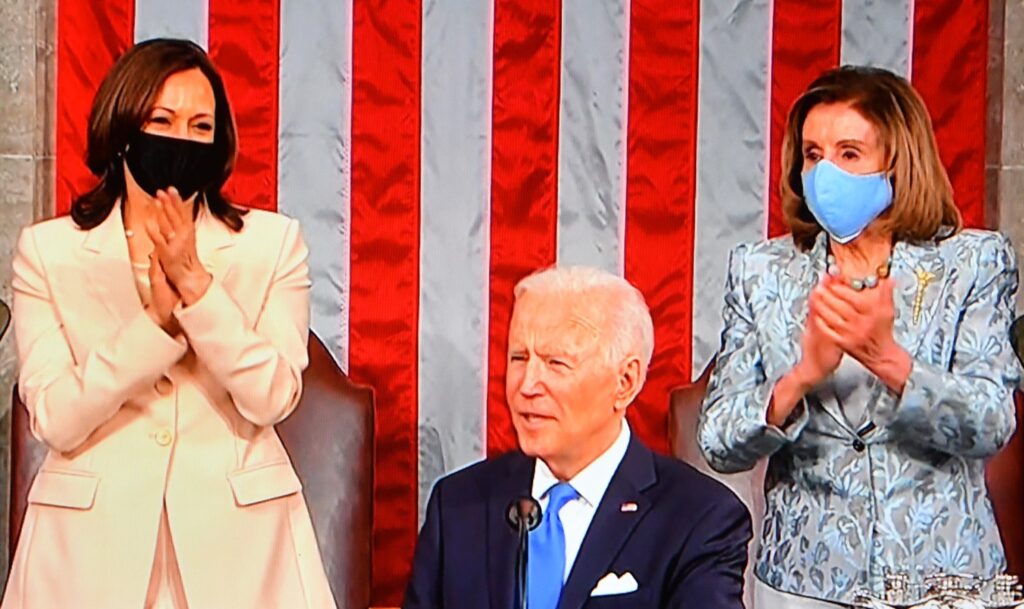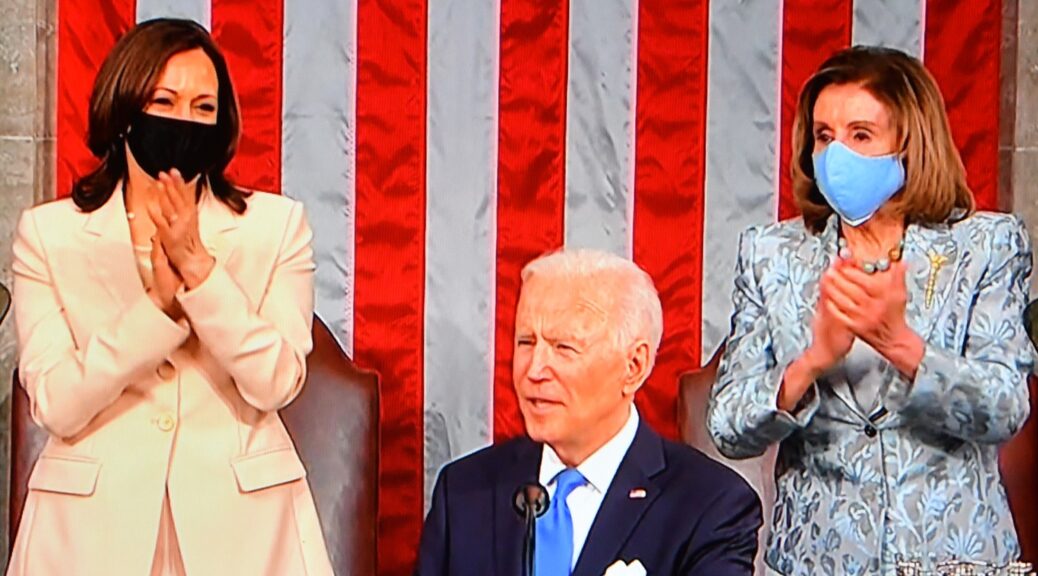
With the Russian invasion of Ukraine likely to take up a large measure of President Joe Biden’s first State of the Union speech, he is unlikely to have enough time or space to detail his accomplishments and his agenda going forward. Here are more details from the White House about what the President will say about clean energy manufacturing, strengthening the US energy sector, and cutting consumer costs and creating good-paying jobs:
President Biden campaigned on a bold vision of tackling the climate crisis with the urgency that science demands by seizing the opportunity to build a strong domestic energy sector that can manufacture and deploy clean energy for the benefit of all Americans—with lower costs for families, good-paying jobs for workers, and healthier air and cleaner water for communities.
Since Day One, he has delivered. After rejoining the Paris Agreement, restoring scientific integrity, and reinvigorating U.S. leadership on the world stage, President Biden mobilized every federal agency to achieve groundbreaking goals: reducing greenhouse gas emissions 50-52% below 2005 levels in 2030, reaching 100% carbon pollution-free electricity by 2035, and delivering 40% of the benefits from federal investments in climate and clean energy to disadvantaged communities. The President formed the first-ever National Climate Task Force, bringing together Cabinet leaders to drive decisive action toward those goals.
Alongside historic executive actions, President Biden also made climate action and environmental justice a centerpiece of his Bipartisan Infrastructure Law—which includes the largest federal investments ever in upgrading the power grid, improving public transit and investing in zero-emission transit and school buses, installing a nationwide EV charging network, cleaning up legacy pollution, delivering clean water and replacing lead pipes, demonstrating innovative climate technologies, and increasing climate resilience to safeguard against extreme weather, which last year caused more than $145 billion in damages from the biggest 20 disasters alone.
CALLING ON CONGRESS TO DELIVER
President Biden knows that we need to move even faster to combat climate change—and that to meet the moment and fully seize the economic opportunity in front of us, Congress must act. In his first State of the Union address, the President will call on Congress to deliver on a legislative agenda for clean energy and climate action that has overwhelming support from the American people—Republicans, Democrats, and Independents.
Specifically, the President will lift up the benefits we can secure for American consumers, companies, and communities by enacting critical investments and tax credits for domestic clean energy manufacturing and deployment. He will also highlight how the investments and tax credits would cut energy costs for American families an average of $500 per year.
As part of the President’s unwavering support for climate solutions, these investments will reduce emissions, lower costs for families, create good-paying jobs for workers, and advance environmental justice.
BOLD ACTIONS TWO MONTHS INTO 2022
As the President works with Congress to deliver on this legislative agenda, he will continue taking decisive and bold action—building on the surge of momentum he has spearheaded to tackle the climate crisis. During just the first two months of 2022, the Biden-Harris Administration:
- Announced actions from seven agencies on clean energy deployment, including new investments and partnerships to advance offshore wind; steps to fast-track solar, onshore wind, and geothermal energy on public lands; and the “Building a Better Grid” initiative to build out long-distance transmission lines and unlock clean energy resources.
- Launched the Building Performance Standards Coalition with more than 30 state and local governments to reduce emissions, create good-paying union jobs in energy efficiency and electrification, and lower energy bills, with federal assistance for policy design and implementation.
- Built on the Methane Emissions Reduction Action Plan by announcing an initial $1.15 billion to clean up orphaned oil and gas wells, $725 million to reclaim abandoned mine lands, a new interagency initiative on measurement and monitoring of methane and other greenhouse emissions, enforcement efforts to minimize methane emissions from pipeline systems, and more.
- Advanced America’s electric vehicle future, standing with CEOs to announce new manufacturing facilities for electric vehicles, batteries, and chargers and issuing state allocations and guidance for the Bipartisan Infrastructure Law’s $5 billion National Electric Vehicle Infrastructure Formula Program.
- Convened a roundtable of electric utility CEOs to discuss their support for Congressional investments in clean energy to reduce costs for families, make the power grid more resilient and reliable, and advance American innovation, job creation, and economic competitiveness.
- Took major steps to reduce industrial emissions and advance clean manufacturing, including clean hydrogen investments, the first Buy Clean Task Force for federal purchasing of low-carbon construction materials, progress on carbon-based trade policies to reward clean steel and aluminum manufacturing, guidance on responsible deployment of Carbon Capture, Utilization, and Sequestration technologies, and new initiatives to ensure that industrial innovation benefits American workers and communities.
- Released the Climate and Economic Justice Screening Tool for public feedback, to help agencies deliver benefits to disadvantaged communities and fulfill the President’s Justice40 commitment.
- Announced major investments to secure a Made in America supply chain for critical minerals and sustainably source key inputs (including lithium and rare earth elements) for clean energy technologies like batteries, electric vehicles, wind turbines, and solar panels. This includes taking action to update outdated mining regulations and laws to ensure that extraction and production adheres to strong environmental, labor, and community and Tribal engagement standards.
- Released America’s Strategy to Secure the Supply Chain for a Robust Clean Energy Transition, a first-of-its-kind energy sector industrial base strategy, which includes the creation of a new Manufacturing and Energy Supply Chains Office at the Department of Energy to strengthen, secure, and modernize the nation’s energy infrastructure and support clean energy manufacturing jobs.
- Held a record-shattering offshore wind auction in the New York Bight, with winning bids for six lease areas totaling $4.37 billion, signaling the arrival of a strong American industry that’s here to stay. Innovative lease stipulations will promote projects built with union labor and Made in America materials, and these projects will generate clean electricity to power millions of homes.
HISTORIC YEAR OF PROGRESS
This wave of climate action to kick off 2022 builds on historic progress President Biden achieved during his first year in office, when he:
- For the first time, set an official target to reach net-zero greenhouse gas emissions, economy-wide, by no later than 2050 and cut greenhouse gas pollution by more than half in 2030.
- Fast-tracked clean energy, setting national records with hundreds of new solar, wind, and storage projects—which are creating good-paying, union jobs and lowering energy costs.
- Launched the American offshore wind industry, with the first approvals of large-scale projects and new lease areas in the Atlantic and the Pacific.
- Jumpstarted an electric transportation future that’s Made in America, uniting automakers and autoworkers to get to 50% electric vehicle sales share in 2030 and spurring investments of over $100 billion in the American EV and battery manufacturing industry.
- Tackled major sources of emissions, with actions to reduce super-polluting hydrofluorocarbon emissions by 85% within 15 years, a Methane Emissions Reduction Action Plan with more than 40 actions across agencies, and the strongest-ever passenger vehicle standards.
- Transformed hundreds of federal programs to deliver on the Justice40 Initiative and drove more than $2.8 billion federal resources to support economic revitalization in hard-hit energy communities.
Established whole-of-government initiatives to: lead by example across the federal vehicle fleet, buildings, and procurement; conserve 30% of U.S. lands and waters by 2030; and build resilience to extreme heat, drought, wildfires, floods, and coastal impacts.

